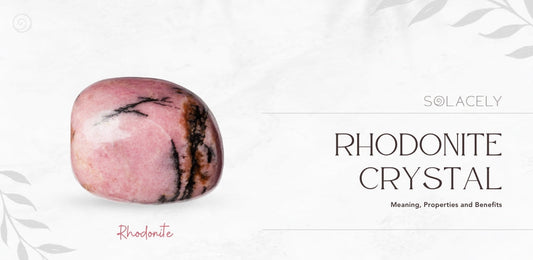Sage is a powerful herb known for its cleansing, healing, and protective properties. For centuries, different cultures have used sage in various forms for its medicinal and spiritual benefits. In this comprehensive guide, we will explore the different types of sages, their unique properties, and how they can be used to enhance your well-being and spiritual practices.
What is Sage?
Sage belongs to the Salvia genus, which includes over 900 species of plants. The most commonly known sage is Salvia officinalis, or garden sage, which is widely used in cooking. However, other types of sage, such as white sage, blue sage, and desert sage, are prized for their spiritual and medicinal properties.
The Different Types of Sage
There are several varieties of sage, each with its own unique characteristics and uses. Below are some of the most popular types of sage used for medicinal and spiritual purposes:
White Sage (Salvia apiana)
White sage is perhaps the most well-known and widely used type of sage for spiritual cleansing and smudging. Native to the southwestern United States and northwestern Mexico, white sage is revered for its strong, pungent aroma and powerful cleansing properties.
Properties
- Strong, pungent aroma.
- Powerful cleansing and purifying properties.
- Used for spiritual protection.
Uses
- Smudging ceremonies.
- Cleansing spaces and objects.
- Meditation and prayer.
Benefits
- Clears negative energy.
- Enhances spiritual awareness.
- Provides protection and purification.
Blue Sage (Salvia azurea)
Blue sage, also known as "Grandmother Sage," is often used as an alternative to white sage. It has a lighter, more floral aroma and is known for its calming and soothing properties.
Properties
- Light, floral aroma.
- Calming and soothing properties.
- Used for healing and relaxation.
Uses
- Smudging ceremonies.
- Meditation and relaxation.
- Healing rituals.
Benefits
- Calms the mind and body.
- Promotes relaxation and peace.
- Aids in healing and emotional balance.
Desert Sage (Artemisia tridentata)
Desert sage, also known as "Big Sagebrush" or "Great Basin Sage," is native to the southwestern United States. It has a distinct, earthy aroma and is often used for its protective and cleansing properties.
Properties
- Earthy aroma.
- Strong protective and cleansing properties.
- Used for spiritual purification.
Uses
- Smudging ceremonies.
- Cleansing spaces and objects.
- Protection rituals.
Benefits
- Removes negative energy.
- Provides spiritual protection.
- Purifies spaces and objects.
Black Sage (Salvia mellifera)
Black sage, also known as "Mugwort Sage," is native to the coastal regions of California and Baja California. It is known for its dream-inducing properties and is often used in shamanic rituals and practices.
Properties
- Sweet, herbal aroma.
- Dream-inducing and protective properties.
- Used in shamanic rituals.
Uses
- Smudging ceremonies.
- Dream work and meditation.
- Shamanic practices.
Benefits
- Enhances dreams and visions.
- Provides spiritual protection.
- Aids in meditation and shamanic journeying.
Common Sage (Salvia officinalis)
Common sage, also known as "Garden Sage" or "Culinary Sage," is widely used in cooking for its savory flavor. However, it also has medicinal properties and can be used for spiritual cleansing.
Properties
- Savory aroma and flavor.
- Medicinal and culinary uses.
- Used for cleansing and protection.
Uses
- Cooking and seasoning.
- Herbal remedies.
- Smudging and cleansing.
Benefits
- Supports digestive health.
- Enhances culinary dishes.
- Provides mild cleansing and protection.
Purple Sage (Salvia leucophylla)
Purple sage, also known as "San Luis Sage," is native to California. It has a mild, sweet aroma and is often used for its calming and healing properties.
Properties
- Mild, sweet aroma.
- Calming and healing properties.
- Used for relaxation and meditation.
Uses
- Smudging ceremonies.
- Meditation and relaxation.
- Healing rituals.
Benefits
- Calms the mind and body.
- Promotes relaxation and peace.
- Aids in emotional healing.
Pineapple Sage (Salvia elegans)
Pineapple sage is a fragrant herb with a sweet, pineapple-like aroma. It is often used in cooking and herbal remedies, and it also has properties that can enhance mood and mental clarity.
Properties
- Sweet, pineapple-like aroma.
- Mood-enhancing and clarifying properties.
- Used in cooking and herbal remedies.
Uses
- Culinary dishes.
- Herbal teas and remedies.
- Aromatherapy and mood enhancement.
Benefits
- Enhances mood and mental clarity.
- Adds flavor to culinary dishes.
- Provides mild calming effects.
How to Use Sage
Sage can be used in various ways to harness its benefits. Here are some common methods of using sage:
Smudging
Smudging is a traditional Native American practice that involves burning sage to cleanse and purify spaces, objects, and individuals. To smudge, light the end of a sage bundle until it begins to smoke, then gently wave the smoke around the area or object you wish to cleanse. As you do this, focus on your intention to clear negative energy and invite positive energy.
Cooking
Common sage (Salvia officinalis) is widely used in cooking for its savory flavor. It can be used to season meats, soups, stews, and sauces. Sage pairs well with poultry, pork, and vegetables, adding a rich, earthy flavor to dishes.
Herbal Remedies
Sage can be used in various herbal remedies to support health and well-being. It can be made into teas, tinctures, and infusions to address digestive issues, sore throats, and other ailments. Sage is also known for its antioxidant and anti-inflammatory properties.
Aromatherapy
Sage essential oil can be used in aromatherapy to enhance mood, reduce stress, and promote mental clarity. Add a few drops of sage essential oil to a diffuser or inhale directly from the bottle to experience its benefits.
Meditation and Prayer
Sage can be used to enhance meditation and prayer practices. Burn a sage bundle or use sage essential oil to create a sacred space and promote a sense of calm and focus. Incorporate sage into your meditation or prayer routine to deepen your spiritual connection.
The Benefits of Using Sage
Using sage can offer numerous benefits for the mind, body, and spirit. Here are some of the key benefits of using sage:
Cleansing and Purifying
Sage is renowned for its ability to cleanse and purify spaces, objects, and individuals. Smudging with sage can help remove negative energy and create a clean, positive environment.
Enhancing Spiritual Awareness
Sage is often used in spiritual practices to enhance awareness and connection to the divine. Burning sage during meditation or prayer can help create a sacred space and deepen your spiritual experience.
Promoting Relaxation and Calm
Certain types of sage, such as blue sage and purple sage, have calming properties that can help reduce stress and promote relaxation. Using sage in aromatherapy or smudging can create a peaceful, calming atmosphere.
Supporting Emotional Healing
Sage can be used to support emotional healing and balance. Rose sage and blue sage, in particular, are known for their ability to promote emotional well-being and compassion.
Providing Protection
Sage is often used for its protective properties. Smudging with sage can create a protective barrier against negative energies and enhance feelings of safety and security.
Enhancing Mental Clarity
Sage can help improve focus and mental clarity. Pineapple sage, in particular, is known for its mood-enhancing and clarifying properties. Using sage essential oil or burning sage can help clear the mind and enhance concentration.
Sage is a versatile and powerful herb with a rich history of use in spiritual, medicinal, and culinary practices. Whether you are looking to cleanse your space, enhance your spiritual practices, or add flavor to your dishes, there is a type of sage that can meet your needs.
From the powerful cleansing properties of white sage to the calming effects of blue sage and the protective qualities of black sage, each type of sage offers unique benefits. By incorporating sage into your daily routine, you can harness its powerful energy to enhance your well-being and spiritual growth.
Remember to use sage with intention and respect, honoring its sacred properties and the cultural traditions from which it originates. Whether you are smudging, meditating, or cooking with sage, take a moment to connect with its energy and appreciate its many gifts.














